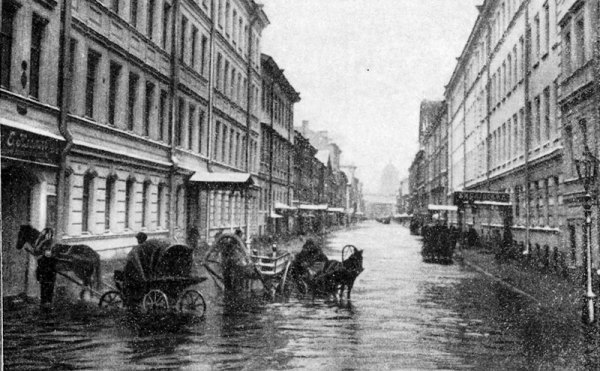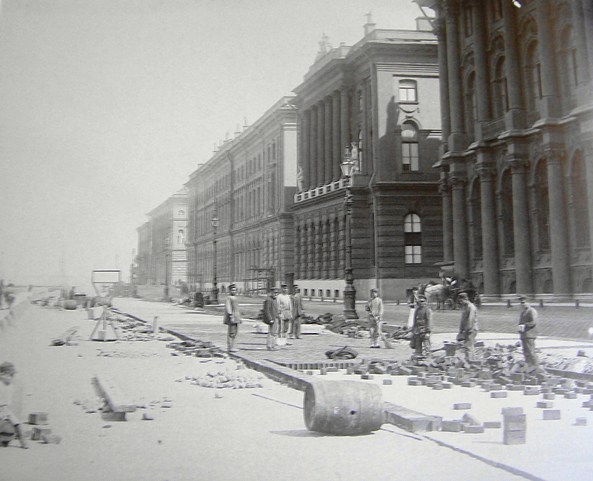Martin Antonenko
A Fixture
- Joined
- Jul 11, 2008
- Messages
- 8,994
The Tsar Worries About His Pavement ...
In an ukase dated September 12, 1715, Tsar Peter forbids. I. all over Saint Petersburg wearing shoes and boots with nailed soles!

In the ukase with the title "O скобах и гвоздях" ("About staples and nails") it is written literally:
"And if someone wears shoes or boots with soles made of staples and nails, (he) will be banished to Siberia and those dependent on him will be punished."

The reason for this seemingly grotesque decree is the tsar's concern for the pavement of the city of Saint Petersburg:
In many streets it is not made of stones - as in other places - but of blocks of wood!
The wooden paving was chosen when the city was built because carts and marching troops make less noise on them than on paving stones.
The following picture clearly shows the road and march path paved with wood ...:

Now the tsar wants to prevent nailed soles from wearing down the wooden pavement excessively!
Although the said ukase disappeared quietly into oblivion after Petr's death, the impractical but noise-insulating wooden paving was retained in Saint Petersburg into the 20th century - even if stone paving was increasingly used over the years!
In 1910, 16 larger streets were paved with wood - in particular the large riverside streets such as Castle quay (round the winter palace), English quai and Newskij quai (where the palaces of the rich were located) and streets through "better" districts such as Wladimir Prospect and Fontanka street.


This was retained until after the revolution - even if the blocks of wood with every flood, as here in 1903 ...

... floated up, got out of shape ...

... and had to be re-laid every time, which was extremely labor-intensive ...:

The following two pictures show the new laying of wooden paving on the Castle quai after the great flood in 1903 ...:


To this day there are wooden paving in some small back streets of Saint Petersburg ...:

In an ukase dated September 12, 1715, Tsar Peter forbids. I. all over Saint Petersburg wearing shoes and boots with nailed soles!

In the ukase with the title "O скобах и гвоздях" ("About staples and nails") it is written literally:
"And if someone wears shoes or boots with soles made of staples and nails, (he) will be banished to Siberia and those dependent on him will be punished."

The reason for this seemingly grotesque decree is the tsar's concern for the pavement of the city of Saint Petersburg:
In many streets it is not made of stones - as in other places - but of blocks of wood!
The wooden paving was chosen when the city was built because carts and marching troops make less noise on them than on paving stones.
The following picture clearly shows the road and march path paved with wood ...:

Now the tsar wants to prevent nailed soles from wearing down the wooden pavement excessively!
Although the said ukase disappeared quietly into oblivion after Petr's death, the impractical but noise-insulating wooden paving was retained in Saint Petersburg into the 20th century - even if stone paving was increasingly used over the years!
In 1910, 16 larger streets were paved with wood - in particular the large riverside streets such as Castle quay (round the winter palace), English quai and Newskij quai (where the palaces of the rich were located) and streets through "better" districts such as Wladimir Prospect and Fontanka street.


This was retained until after the revolution - even if the blocks of wood with every flood, as here in 1903 ...

... floated up, got out of shape ...

... and had to be re-laid every time, which was extremely labor-intensive ...:

The following two pictures show the new laying of wooden paving on the Castle quai after the great flood in 1903 ...:


To this day there are wooden paving in some small back streets of Saint Petersburg ...:




